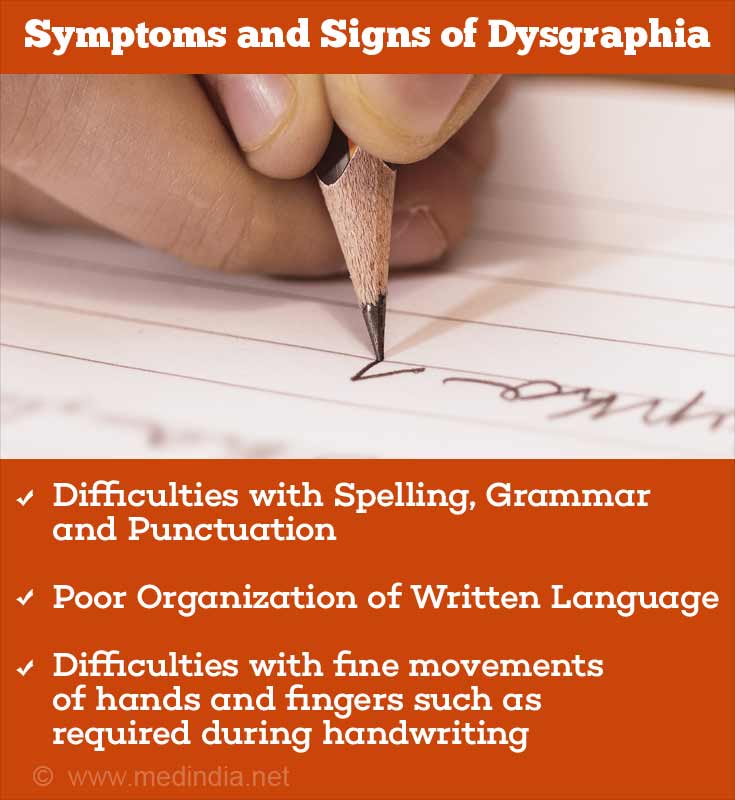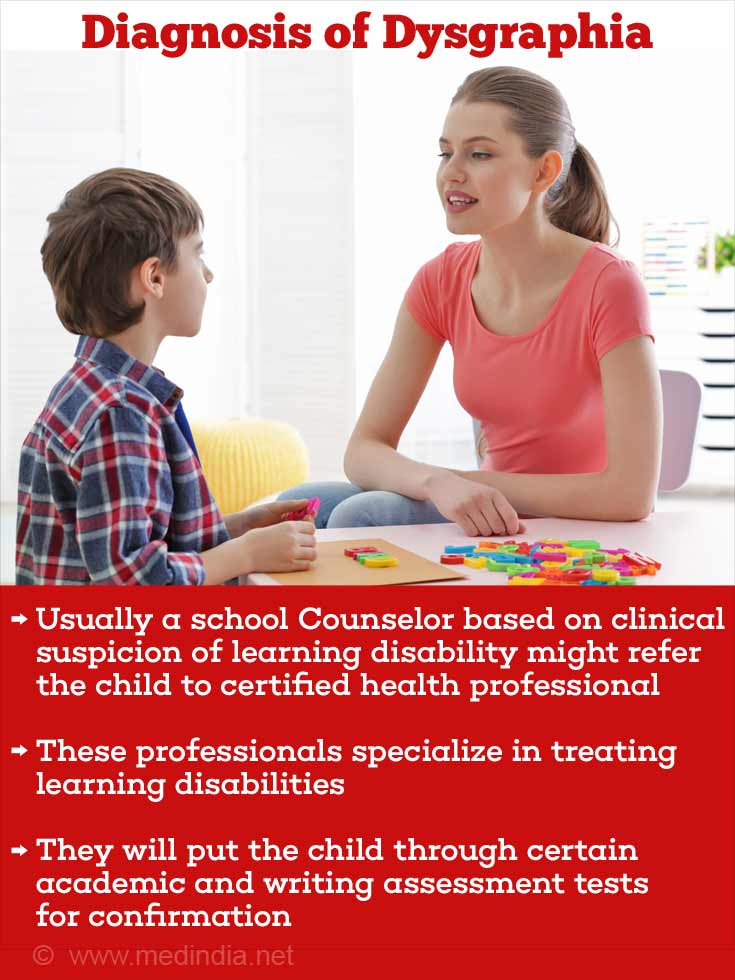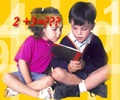- Understanding Dysgraphia - (https://www.understood.org/en/learning-attention-issues/child-learning-disabilities/dysgraphia/understanding-dysgraphia)
- Parenting - Writing - Dysgraphia: learning disabilities in writing - (https://www.greatschools.org/gk/articles/dysgraphia-learning-disability-writing/)
- Dysgraphia - The neurological disorder - (https://www.ninds.nih.gov/disorders/all-disorders/dysgraphia-information-page)
What is Dysgraphia?
Dysgraphia or disorder of written expression is a childhood learning disorder marked by poor writing skills such as bad handwriting, multiple spelling and punctuation errors and an inability to organize thoughts properly before putting into words.
The problem may occur alone or in association with other conditions such as attention deficit disorder (ADHD), speech and reading difficulties and developmental coordination disorder, a condition characterized by clumsiness, difficulty holding objects, unsteadiness while walking and losing balance and tripping.
What are the Types of Dysgraphia?
Dysgraphia affects ability to write clearly, even if reading skills are normal. Types of dysgraphia identified include
- Type 1 - Dyslexia dysgraphia where voluntary written work is illegible but copied matter is good although spelling errors are common. A child with dyslexia dysgraphia does not necessarily suffer from dyslexia.
- Type 2 - Motor dysgraphia due to lack of fine-motor skills (such as delicate movements of hands and fingers), poor muscle tone and general clumsiness. Any form of written work is unclear and illegible, whether written by the child naturally or copied from another source. Spelling skills are not affected.
- Type 3 - Spatial dysgraphia due to difficulties in spatial awareness (inability to understand the size, shape and position of objects/written letters and their relation to one another while writing a sentence). Both naturally created written work as well as copied work are poor and illegible. Spelling skills may not be affected in this type.
What are the Causes of Dysgraphia?
Like many other conditions, the exact cause/causes of dysgraphia are poorly understood. Some of the theories put forward include the following
- Genetic link – Possible genetic association has been suggested since dysgraphia has been found to run in families
- Difficulty or inability to properly organize information stored in memory while writing
- Issues with working memory – Inability to store unfamiliar words in the memory and difficulty remembering what to write
- Lack of or poor fine motor skills necessary for writing (developmental coordination disorder)
- Associated with other learning disabilities eg reading disorder, ADHD, autism spectrum disorder
What are the Symptoms and Signs of Dysgraphia?
The symptoms will vary according to the age of the child. For example a preschooler will report that he/she hates drawing and coloring while a school going child may have the typical grammar, spelling and punctuations described below
Difficulties with Spelling and Handwriting
- Cannot identify if a word has been misspelled
- Spells correctly orally but problems with spelling while writing
- Spells the same word in many different ways at different times
- Mixing of upper- and lowercase letters
- Mixing of cursive (joining letters while writing) and non-cursive writing
- Avoiding writing
- Erases a lot
- Difficulty reading own handwriting
Problems with Grammar and Punctuation
- Incorrect use of commas and mixing tenses
- Inability to write long sentences but tend to write in short sentences
- Sometimes sentences are extremely long with no full stops or spacing between words
Poor Organization of Written Language
- Unable to get to the point, and makes the same point over and over
- Conveys ideas better when speaking
- Descriptions are unclear, omitting important information or writing unnecessary points
Difficulties in spatial awareness
- Inability to write on a line or within margins
- Difficulties with drawing or reproducing shapes and reading maps
- Inappropriate spacing and size of letters
- Takes unusually long time to copy text
- Words go in all directions and without gaps between words
Difficulties with fine movements of hands and fingers (fine motor skills)
Fine motor skills refers to actions that require precise and well controlled hand and fingers that involves good hand and eye coordination, for example tying shoelaces, handwriting, sewing, or fastening buttons on a dress
- Difficulty holding a pencil correctly, texting or typing using a keyboard
- Keeps hands, arms and body or even the paper in an awkward angle while writing
- Inability to color within the lines
- Cannot use scissors properly

How do you Diagnose Dysgraphia?
It is difficult to make a diagnosis of dysgraphia as parents may not be aware of such a condition. Early diagnosis is important to start treatment early. The condition may be recognized by the school Counselor and based on clinical suspicion of dysgraphia or similar learning difficulty the Counselor will refer the child to certified health professionals who specialize in treating learning disabilities.
These professionals will conduct academic assessments and writing tests on the child which assess grammar, spelling and punctuations as well as fine motor skills.
The child will be asked to write his/her own sentences as well as copy a given text. The written matter as well as the writing process will be assessed. This includes hand and arm posture, pencil grip, signs of pain and tiredness and signs of cramping of hand and arm muscles. Other tests may be employed to determine fine motor skills.
The school psychologist may assess how this condition affects the child emotionally as well as the child’s academic performance.

How do you Treat Dysgraphia?
Special or remedial education is the best treatment approach to manage this condition. There are no medicines to treat this condition. If group instruction is not helping, the child may need one-on-one sessions
There are many ways to help a child with dysgraphia. Generally, support falls into these categories:
- Accommodations - Refers to employing other means of learning. These include typing on a keyboard or other electronic device instead of writing. Dictation and voice recognition software can help these children dictate notes instead of writing
- Modifications - Refers to minimizing the areas of difficulties and changing expectations. Examples of modifications include permitting the child to write shorter answers, giving fewer number of questions or a different set of questions than his classmates.
- Remediation - Refers to training the child to improve and master writing skills. For example, children may practice copying from books or passages, using paper with raised lines to help writing in straight lines. Exercises to improve muscle strength and fine hand and finger movements and improving hand-eye coordination may be taught by an occupational therapist.
All methods of help should be considered when planning treatment. A child with dysgraphia will benefit from both specialists as well as those close to the child. Finding the ideal and best form of support is a process of trying out the different methods and exchanging thoughts and feedback on what works best in any given case.








